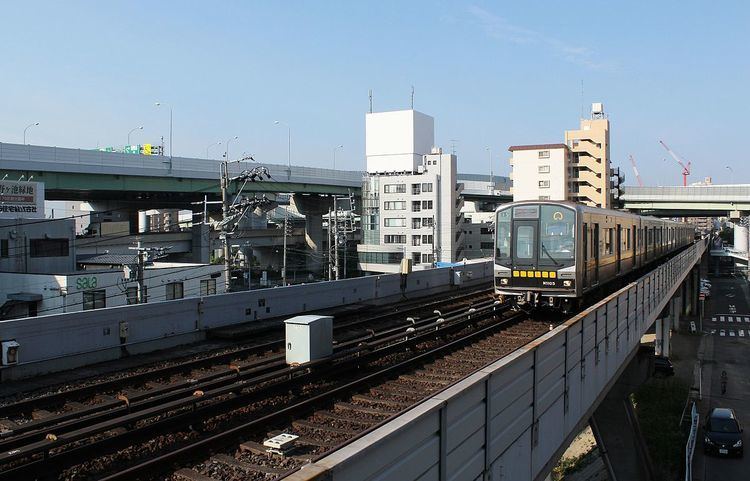Native name 東山線 Daily ridership 200,334 (2008) Character Hatchii Stations 22 | Type Rapid transit Locale Nagoya | |
 | ||
Opened November 15, 1957 (1957-11-15) Operator Transportation Bureau City of Nagoya Terminis Fujigaoka Station, Takabata Station | ||
n1000
The Higashiyama Line (東山線, Higashiyama-sen) is a subway line, which forms part of the Nagoya Municipal Subway system in Nagoya, Japan. Officially, the line is referred to as Nagoya City Rapid Railway Line 1 (名古屋市高速度鉄道第1号線, Nagoya-shi Kōsokudo Tetsudō Dai-ichi-gō-sen). It runs from Takabata in Nakagawa Ward to Fujigaoka in Meitō Ward, all within Nagoya. The Higashiyama Line's color on maps is Windsor yellow; its stations carry the letter "H" followed by a number. All the stations accept manaca, a rechargeable contactless smart card.
Contents
The first section of the line opened in 1957. The line links Nagoya Station and Sakae, the CBD of Nagoya. As such, the line has the highest ridership among Nagoya Municipal Subway Lines. On arriving at Nagoya Station (from Fujigaoka), departing Nagoya Station (to Fujigaoka), or at Fujigaoka Station, the announcements are made in five languages, namely Japanese, English, Korean, Chinese, and Portuguese, in that order.
Stations
The stations are as follows:
History
The Higashiyama Line was the first underground rapid transit line in Nagoya, and it opened initially on 15 November 1957 with three stations. The three stations were Nagoya Station, Fushimimachi Station (now Fushimi), and Sakaemachi Station (now Sakae). At first, the subway had six 100 series EMU trainsets, formed with two cars per set.
The line was extended from Sakaemachi (now Sakae) to Ikeshita on June 15, 1960, from Ikeshita to Higashiyama Kōen on April 1, 1963, from Higashiyama Kōen to Hoshigaoka on March 30, 1967.
The line was simultaneously extended from Nagoya to Nakamura Kōen and from Hoshigaoka to its current eastern terminus of Fujigaoka on April 1, 1969. The line was further extended from Nakamura Kōen to its present western terminus of Takabata on September 21, 1982, and with that was completed as the line which operates today.
Rolling stock
All trains are based at Takabata and Fujigaoka Depots.
Former
The 250, 300 and 700 series trains were later sold to Takamatsu-Kotohira Electric Railroad, where they were refurbished and reclassified as Kotoden 600 series (former 250/700 series) and Kotoden 700 series (former 300 series), and to the Argentinian transport company Metrovías S.A., where they serve Line C of the Buenos Aires Metro.
The last remaining 5000 series train in service was withdrawn following a special final run on 30 August 2015.
